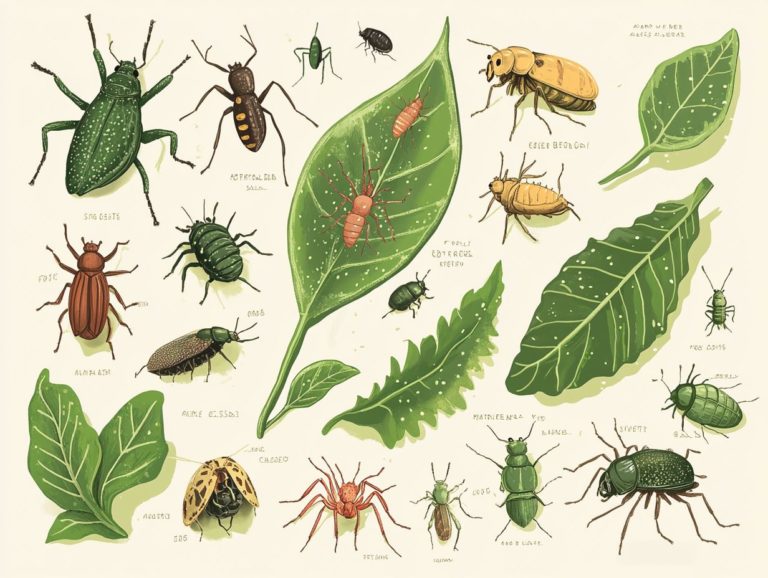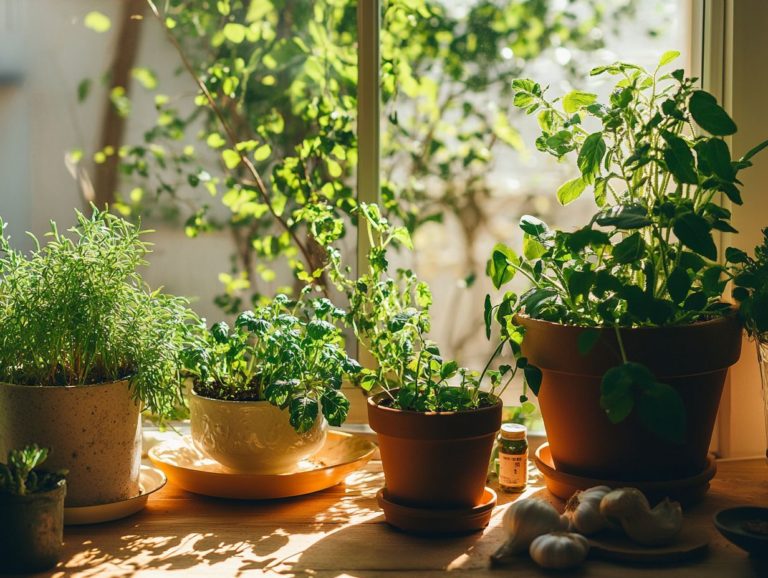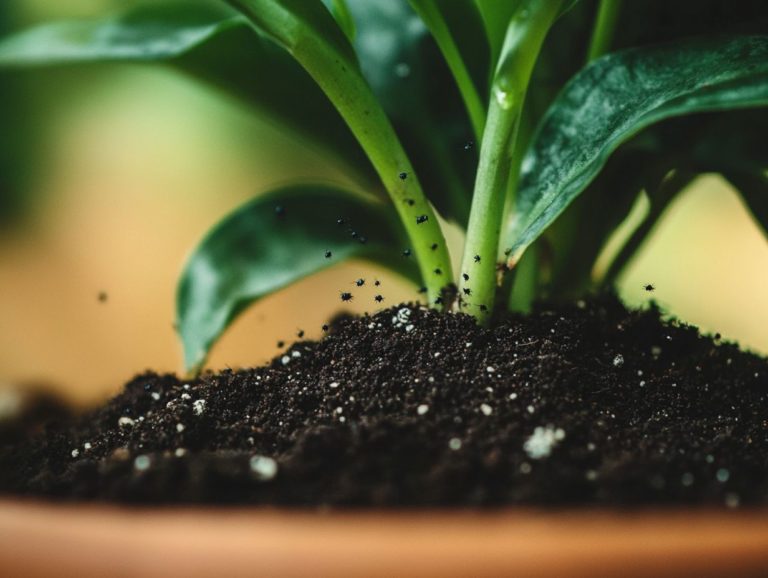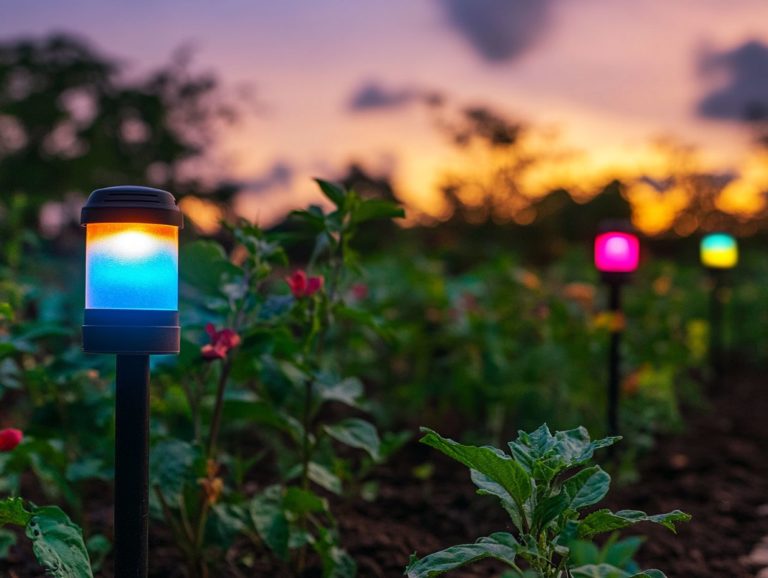How to Use Rubbing Alcohol for Pest Removal
Rubbing alcohol transcends its role as a mere first-aid staple. Get ready to reclaim your space from pests!
This article delves into how rubbing alcohol effectively eradicates a range of unwelcome visitors, from bothersome ants to tenacious spider mites and bed bugs. It uncovers the science behind its pest-fighting prowess, offers practical application techniques, and emphasizes essential safety precautions to keep in mind.
This article also compares rubbing alcohol with other pest control options, guiding you to select the most effective strategy for your home.
Contents
- Key Takeaways:
- Why Rubbing Alcohol Works Wonders Against Pests
- Types of Pests that Can be Eliminated with Rubbing Alcohol
- Using Rubbing Alcohol for Pest Control
- Safety Considerations
- Alternatives to Rubbing Alcohol for Pest Removal
- Frequently Asked Questions
- How do I use rubbing alcohol to get rid of pests?
- What types of pests can be removed with rubbing alcohol?
- Can I use rubbing alcohol for pest removal on all surfaces?
- Will rubbing alcohol harm my pets?
- How often should I use rubbing alcohol for pest removal?
- Are there any precautions I should take when using rubbing alcohol?
Key Takeaways:
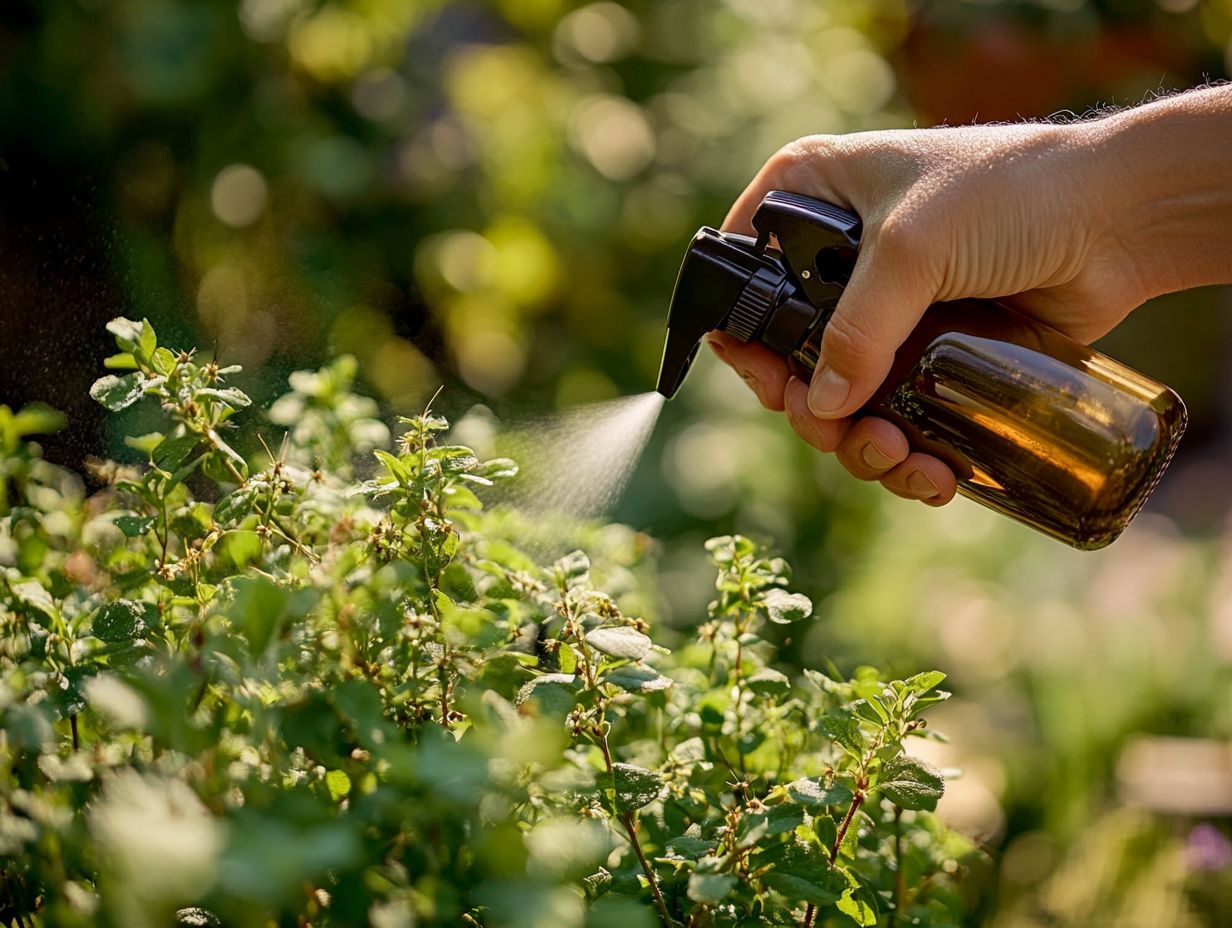
- Rubbing alcohol is an effective and affordable method for eliminating pests in your home.
- Common household pests, such as bed bugs and cockroaches, can be effectively eliminated with rubbing alcohol.
- When using rubbing alcohol for pest control, follow proper application methods and safety precautions to ensure its effectiveness and avoid potential risks.
Why Rubbing Alcohol Works Wonders Against Pests
Rubbing alcohol, particularly isopropyl alcohol, has become a go-to solution for bug control, especially when dealing with pesky household invaders like spider mites, aphids, and mealybugs. It effectively addresses various infestations and is safe for home use.
The active ingredients in this alcohol solution penetrate the exoskeletons of these pests, ensuring their downfall upon contact. This method is increasingly favored by homeowners in search of a natural alternative to conventional bug killers, as it protects beneficial insects and the environment while effectively addressing aphid infestations.
How and Why it Works
Isopropyl alcohol serves as a highly effective pest control agent, thanks to its elevated alcohol concentration, which disrupts the cellular structure of pests like spider mites and other soft-bodied insects.
This process quickly dries out the pests’ cells. As the alcohol infiltrates the insect’s body, it causes the cells to lose water and ultimately collapse. The effectiveness of isopropyl alcohol hinges on its alcohol concentration; for example, a 70% solution tends to be more effective for penetrating cell walls compared to higher concentrations, such as 90% or more, which can evaporate too swiftly, leaving fruit fly eggs unharmed.
Certain pests, such as aphids, are also notably affected, showcasing the versatility of this approach. By grasping these dynamics, you can effectively tailor your pest control strategies for optimal results, particularly in managing an ant problem.
Types of Pests that Can be Eliminated with Rubbing Alcohol
Rubbing alcohol is your secret weapon against a range of household pests, proving itself as a versatile ally in pest control, including centipedes removal. Whether you re dealing with spider mites, aphids, ticks, centipedes, bed bugs, fruit flies, or mealybugs, each of these pests presents its own set of challenges and can disrupt your living space or wreak havoc on your plants.
Timely intervention is key, especially when it comes to ticks and other pests that can invade your home or garden. The beauty of rubbing alcohol lies in its ability to penetrate the protective exoskeletons of these pests, effectively eliminating them before they inflict serious damage on your plants or multiply throughout your home.
Don t let pests take over your home try rubbing alcohol today!
Common Household Pests
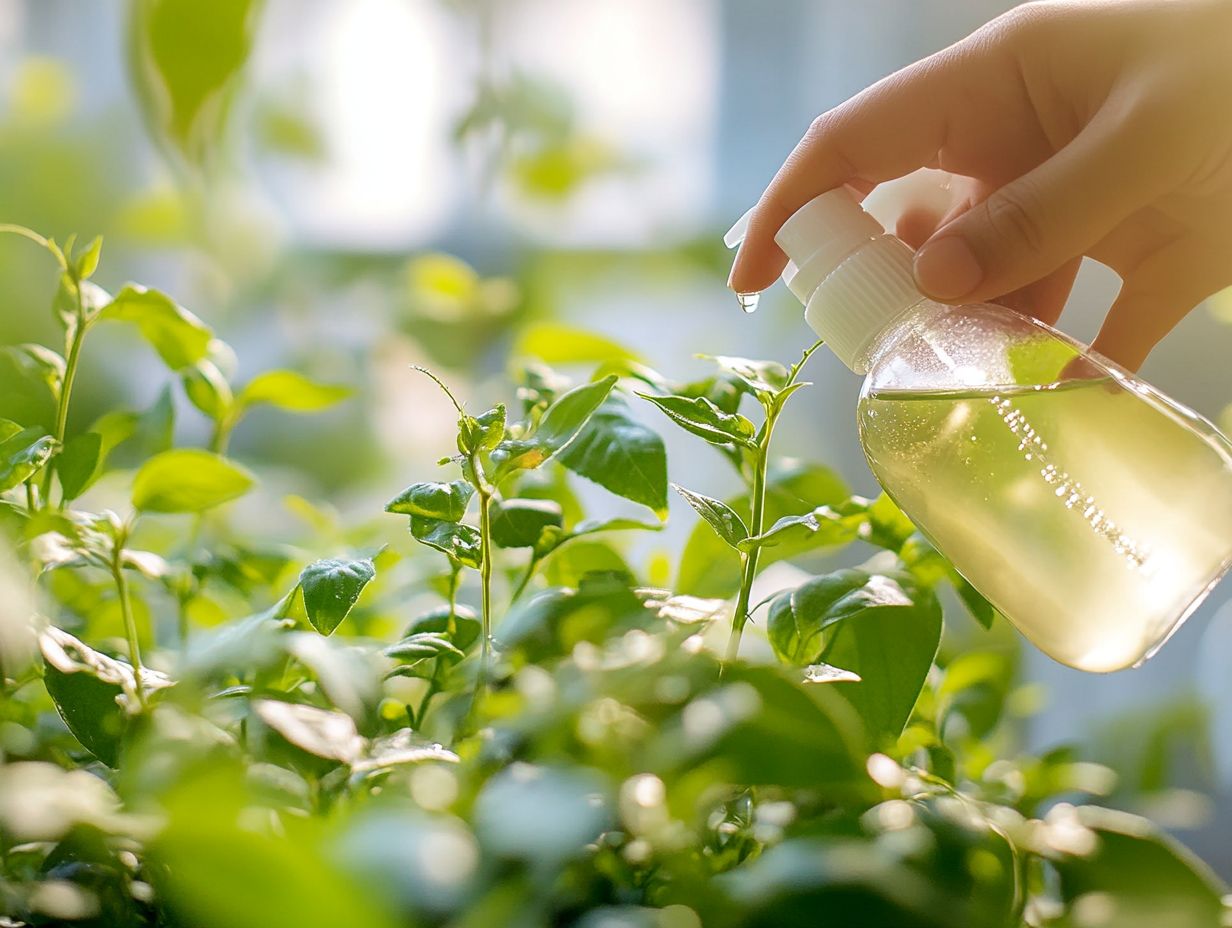
Common household pests like spider mites and bed bugs can jeopardize your health and property. They multiply quickly, turning your living space into a nightmare.
Spider mites love warm, dry conditions. They spin webs and damage your beloved plants.
Aphids are notorious for sucking the sap from plants, leading to distortion and stunted growth.
Bed bugs are infamous for their sneaky ways. They often hitch a ride into your home on clothing or luggage, feast on your blood, and leave behind itchy welts.
Fruit flies reproduce astonishingly fast, turning your kitchen into a breeding ground and spoiling your fresh produce.
Mealybugs cling to your houseplants, secreting a sticky residue that encourages mold growth.
Fortunately, rubbing alcohol can be sprayed directly onto these pests, suffocating them and disrupting their life cycles, including killing ticks effectively. By targeting specific spots, you can manage and reduce their presence, creating a safer, pest-free environment for yourself.
Using Rubbing Alcohol for Pest Control
You can use rubbing alcohol in multiple ways to control pests effectively. One effective method involves treating houseplants with an alcohol solution.
Using alcohol solutions on cotton pads allows you to treat areas with pests. Carry out these methods in well-ventilated spaces to mitigate any risks related to inhaling fumes.
Apply the mixture carefully to avoid harming plant leaves or beneficial insects. This ensures it is safe to use.
By following these proper application techniques, you can eliminate pests while causing minimal disruption to your household environment.
Application Methods and Tips
There are several effective methods for using rubbing alcohol in pest control, such as spraying and applying cotton pads soaked in an alcohol solution. When done correctly, both approaches are safe and highly effective.
If you choose to spray, ensure your nozzle delivers a fine mist and that you are in a well-ventilated space. This allows for even distribution of the solution, maximizing coverage and effectiveness.
Using cotton pads allows for a more targeted approach, especially for stubborn infestations. It s best to apply the alcohol during early morning or late evening when pests are most active and less likely to be disturbed.
By conducting regular applications every few days, you can significantly enhance your results. Always test a small area first to avoid potential surface damage. Ensure proper ventilation and keep the solution away from flames to prevent hazards.
Safety Considerations
When you opt for rubbing alcohol as a pest control solution, prioritize safety to mitigate potential risks. Ensure adequate ventilation and follow necessary precautions.
While rubbing alcohol can effectively eliminate pests, improper use can lead to damaging your plant leaves or posing inhalation risks for individuals in your household.
To fully reap the benefits of this pest control method while protecting your plants and those in your home, follow established guidelines for safe usage.
Ventilation
Always ensure that the area is well-ventilated when using rubbing alcohol.
Proper Usage
Apply the solution carefully and test on a small area first.
Potential Risks
Be aware of the risks of damaging plants or causing inhalation issues.
Start using rubbing alcohol today and reclaim your home from pests!
Precautions and Potential Risks

When using rubbing alcohol, it’s essential to exercise caution and be aware of the potential risks. Handle it carefully to ensure it’s safe to use around certain plants and household members.
Before applying it anywhere, take a moment to test it on a small, inconspicuous area. This small step can save you from damaging sensitive materials or delicate plants. Avoid mixing rubbing alcohol with other chemicals, as this can result in harmful reactions that no one wants to deal with.
It’s crucial! Keep this powerful substance out of the reach of children and pets, since even small amounts can pose significant dangers, especially in homes with soft-bodied pests. Familiarizing yourself with which plants may react unfavorably to alcohol will help protect your greenery from unwanted harm.
Alternatives to Rubbing Alcohol for Pest Removal
While rubbing alcohol serves as a potent pest control method, several equally effective alternatives are at your disposal. Options such as ethanol, methanol, vinegar, and a soap-and-water mixture each offer distinct advantages and can be customized to address specific pest issues.
These alternatives are invaluable for anyone seeking to broaden their pest control strategies. Explore these options based on your individual needs, the types of pests you’re dealing with, including bed bugs and fruit flies, and your environmental preferences.
Comparing Different Pest Control Methods
When comparing different pest control methods, it’s essential to weigh the effectiveness and safety of options like rubbing alcohol against the myriad alternatives available on the market.
Evaluating your options now can change how you manage pests moving forward! This evaluation can impact your decisions as a homeowner, especially as you strive for a balance between effectiveness, cost, and environmental considerations, perhaps guided by research from Ohio University or Cornell University.
Rubbing alcohol, often lauded for its rapid action against pests, provides a stark contrast to chemical insecticides, which may promise longer-lasting results but frequently come with health risks and environmental concerns.
Homemade solutions crafted from common household ingredients like vinegar, soap, and water offer a more natural alternative, although they might require multiple applications to achieve the desired effectiveness. Organic options may resonate with your eco-conscious values, yet they typically present their own challenges in terms of cost and accessibility.
By carefully analyzing these methods, you can ensure that your pest management strategy aligns with your personal values and sustainability goals.
Frequently Asked Questions
How do I use rubbing alcohol to get rid of pests?
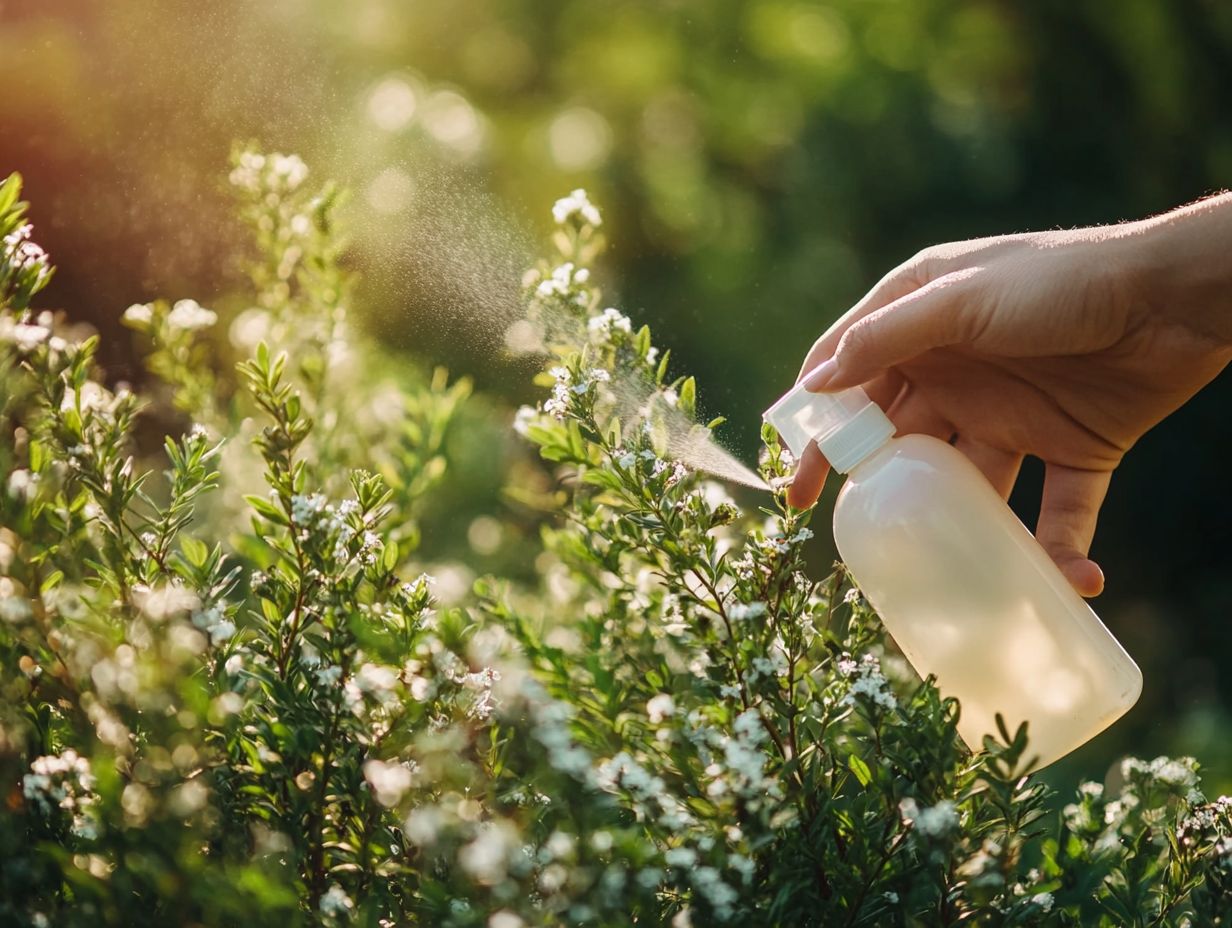
To use rubbing alcohol for pest removal, mix equal parts of rubbing alcohol and water in a spray bottle. Spray the mixture directly onto the pests or their entry points to kill them and deter them from returning.
What types of pests can be removed with rubbing alcohol?
Rubbing alcohol is effective in removing a wide range of pests, including ants, spiders, roaches, bed bugs, and some flying insects. It is safe to use on most surfaces and will not leave behind harmful residues.
Can I use rubbing alcohol for pest removal on all surfaces?
Rubbing alcohol is safe to use on most surfaces, including wood, plastic, and metal. However, it’s important to test a small area first to ensure it does not damage or discolor the surface. Avoid using rubbing alcohol on delicate fabrics or finished wood surfaces.
Will rubbing alcohol harm my pets?
Rubbing alcohol is generally safe for use around pets. However, keep them away from the area being treated and ensure they do not ingest the rubbing alcohol. If your pet has come into contact with rubbing alcohol, wash the affected area with water and consult a veterinarian if they show any signs of discomfort.
Now that you have the tools and knowledge for pest control, don t wait! Start tackling those pesky pests today!
How often should I use rubbing alcohol for pest removal?
The frequency of rubbing alcohol use depends on how bad your pest problem is. For minor infestations, use it once a week.
For serious infestations, you may need to apply it more often. Don t let those pests take over your space!
Are there any precautions I should take when using rubbing alcohol?
Ready to tackle those pests with rubbing alcohol? Before using it, wear gloves and protective eyewear to avoid burns or discomfort.
Also, work in a well-ventilated area and don t inhale the spray. After handling, wash your hands thoroughly. Keep your safety a top priority while you fight off pests!

